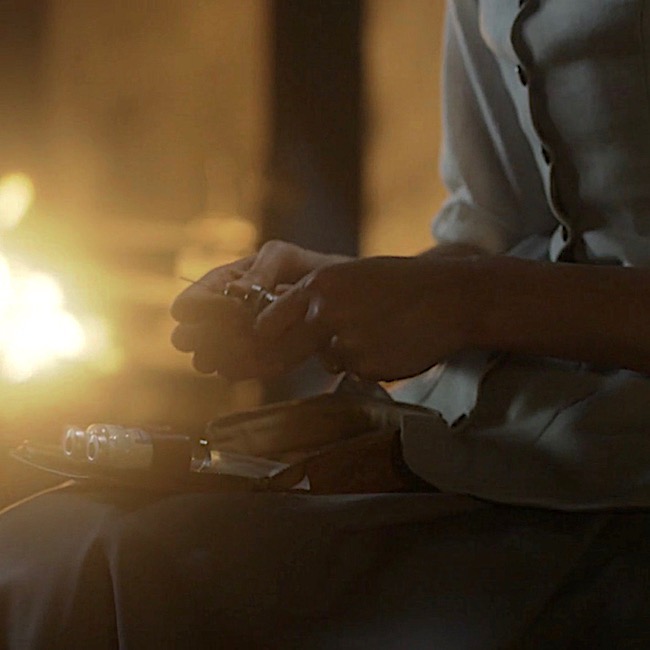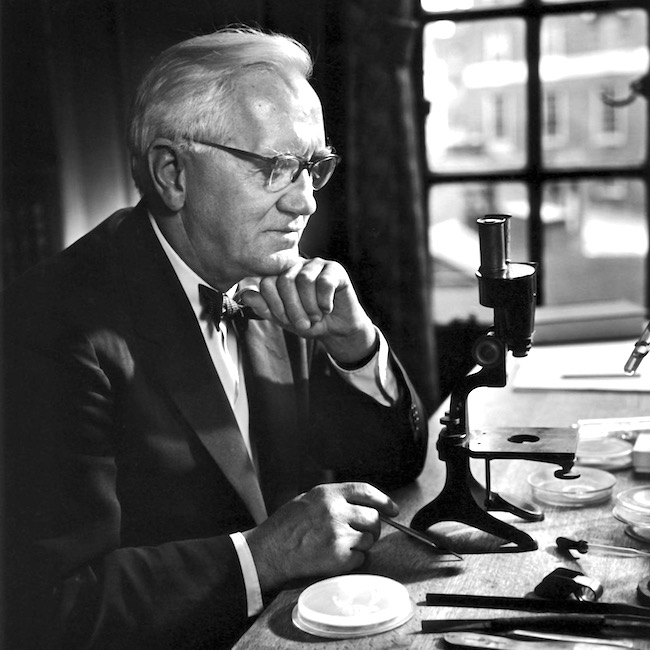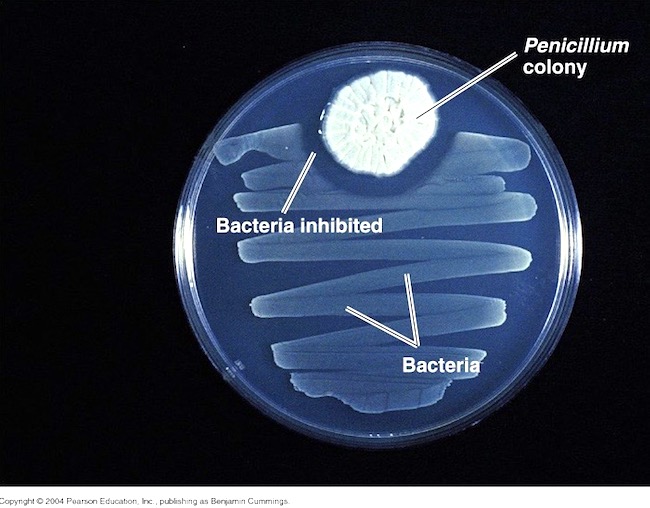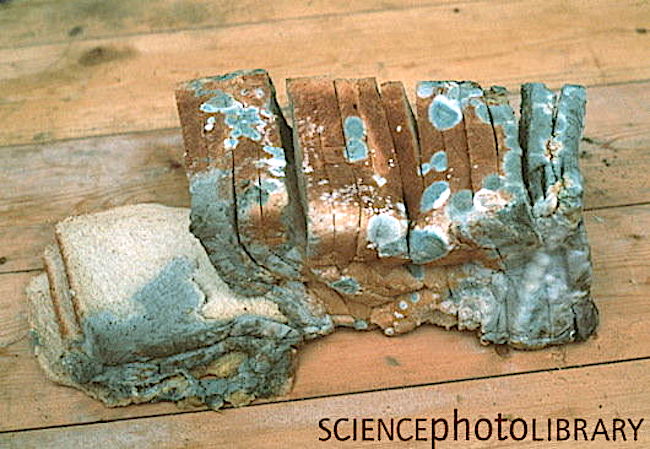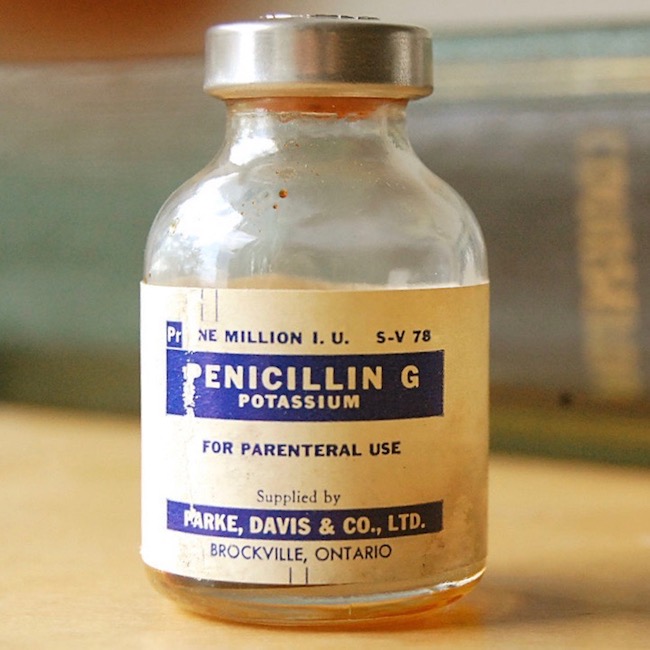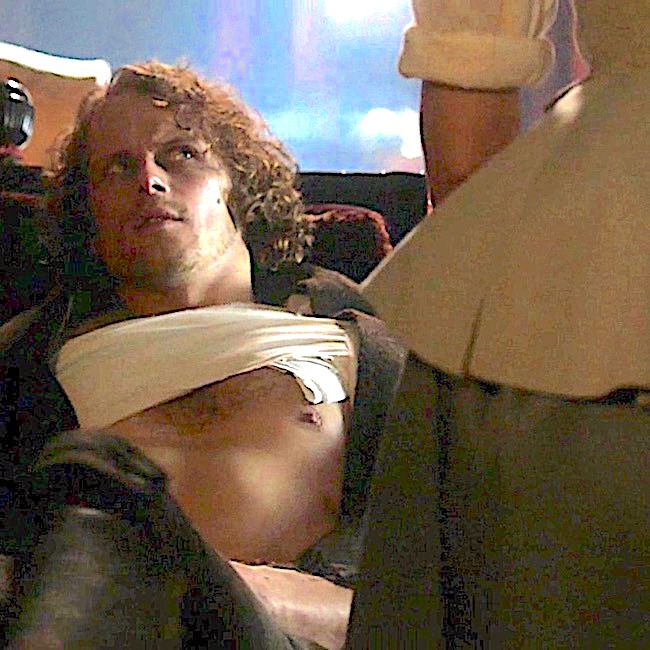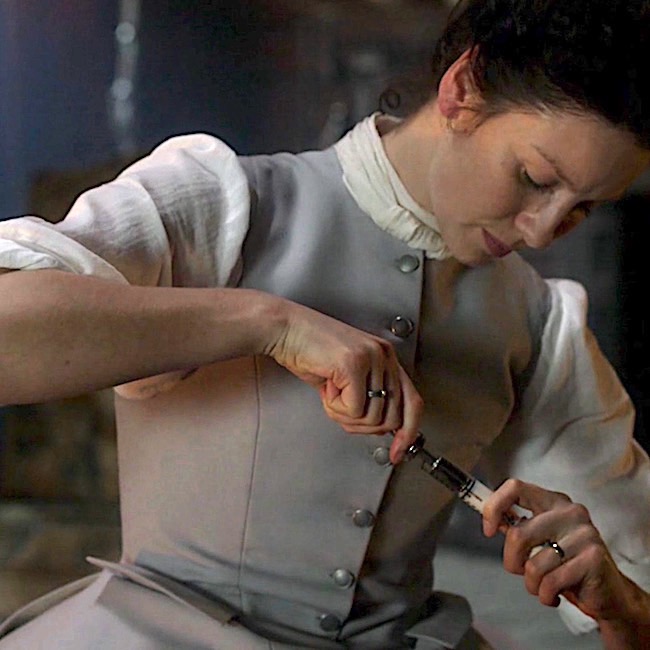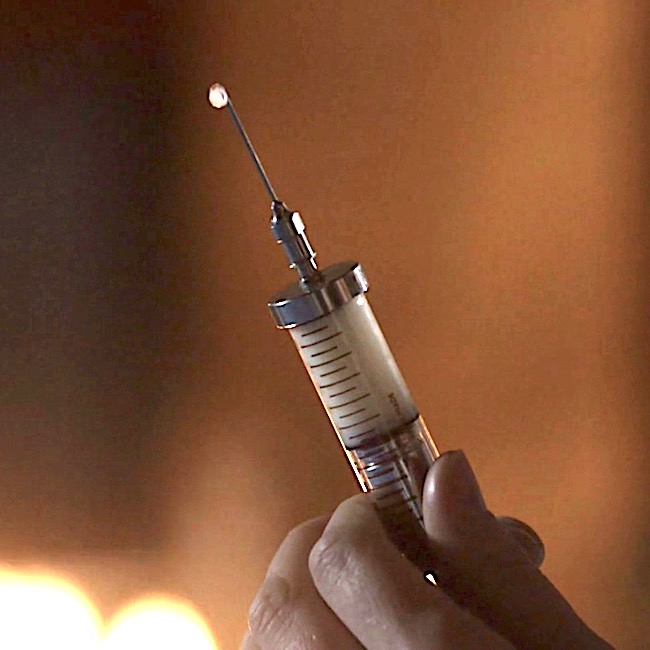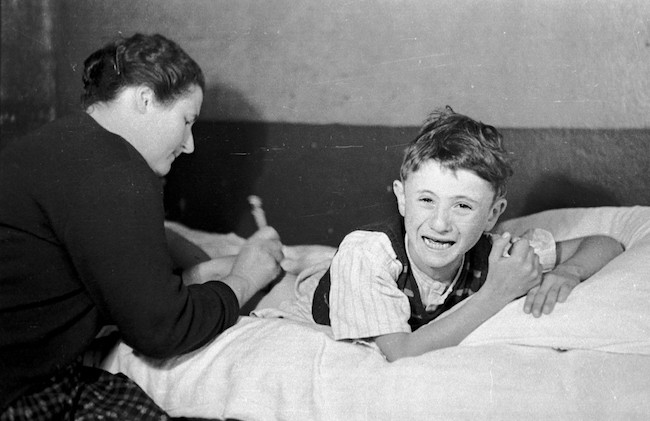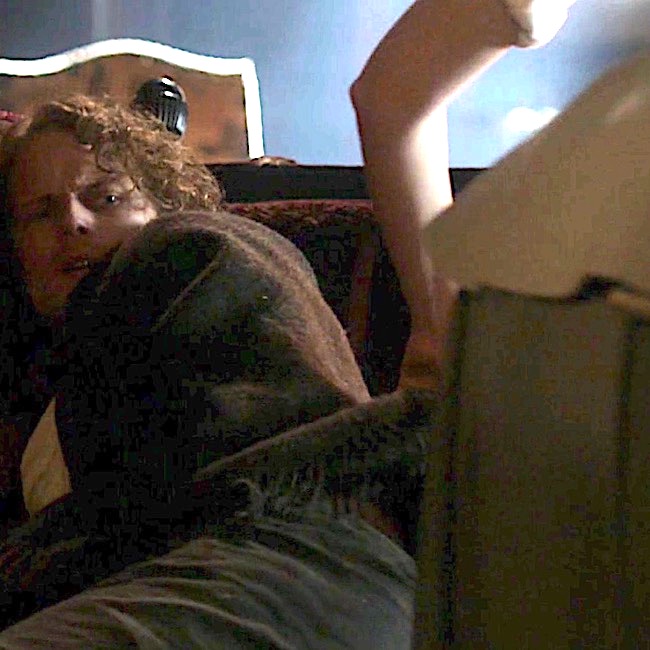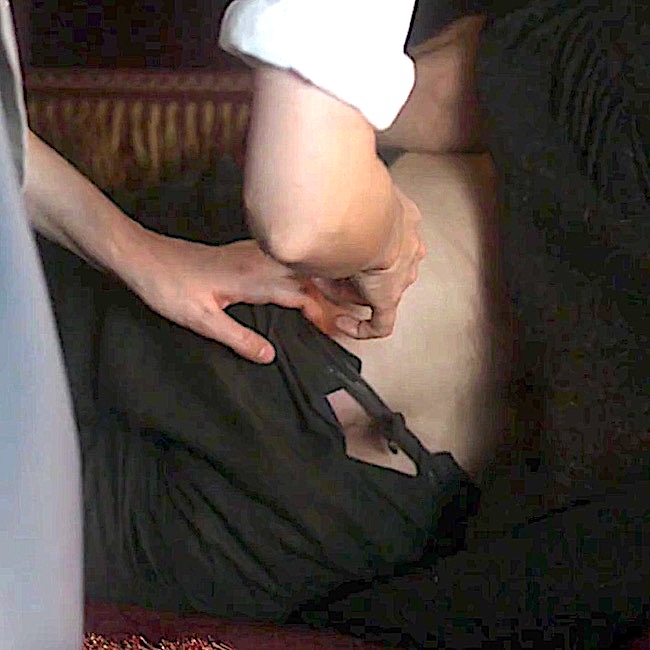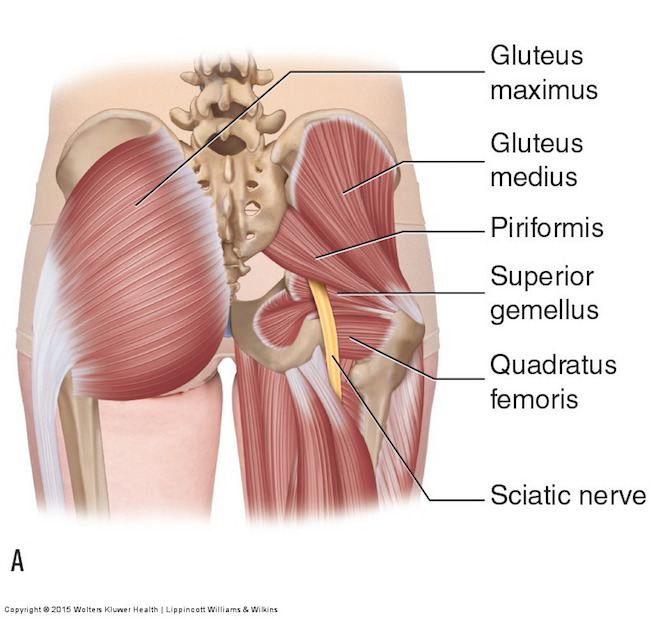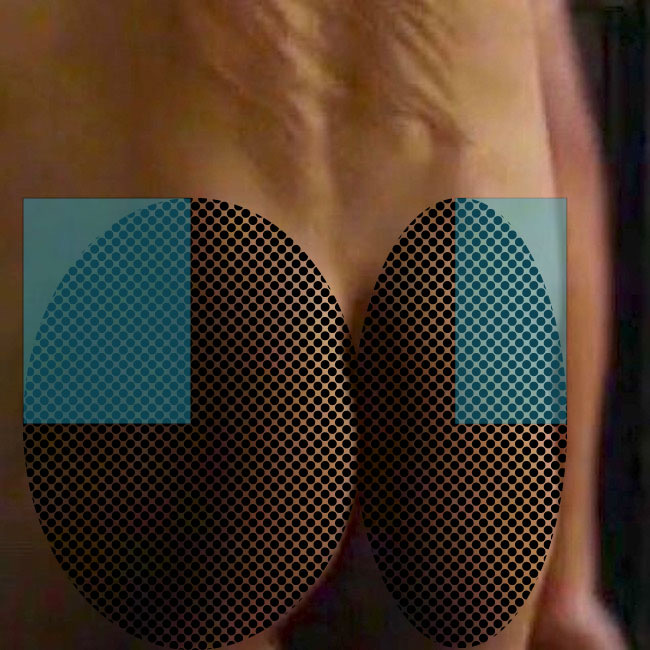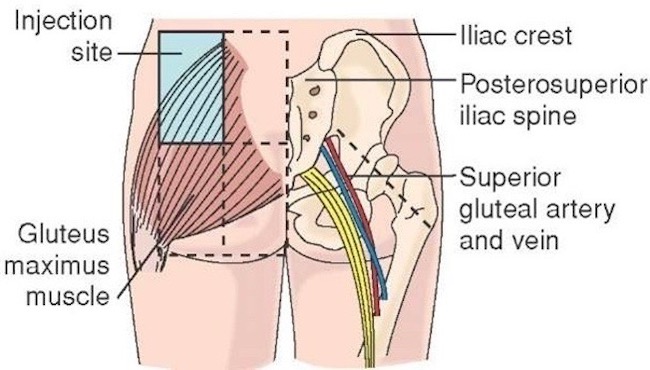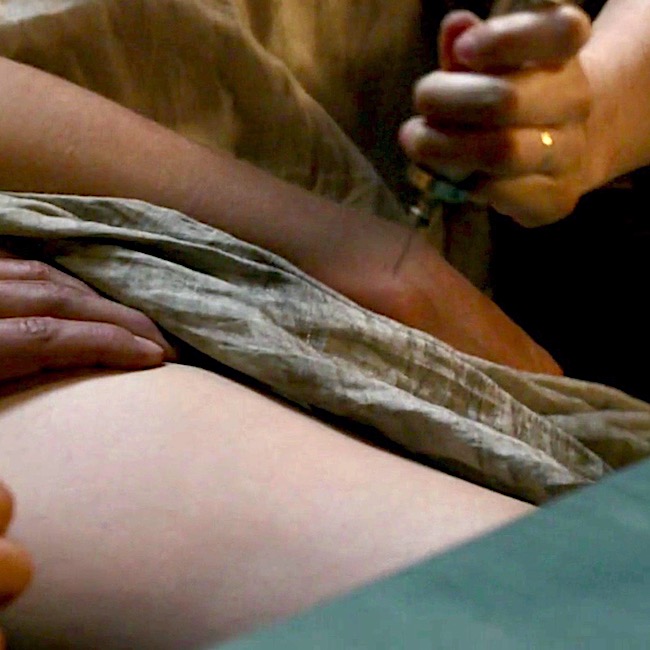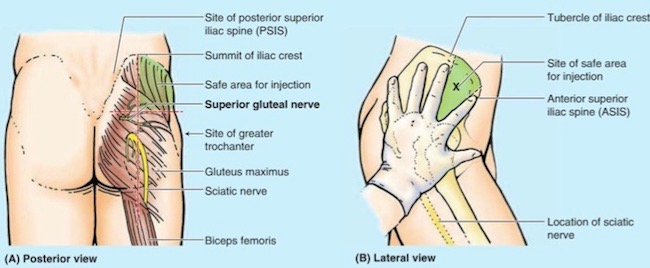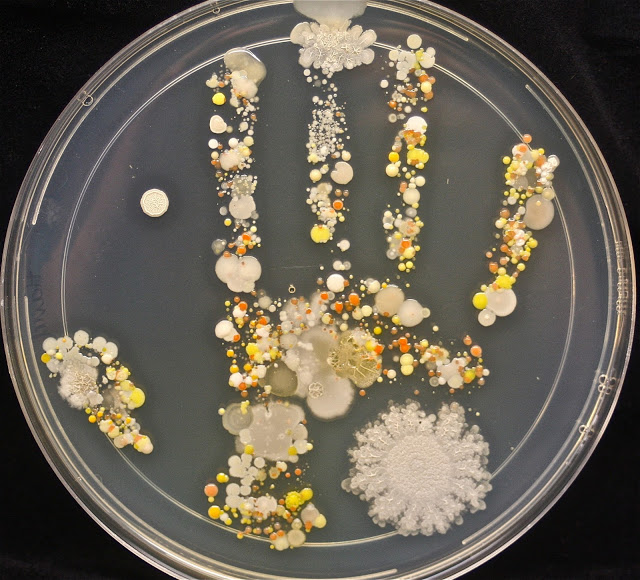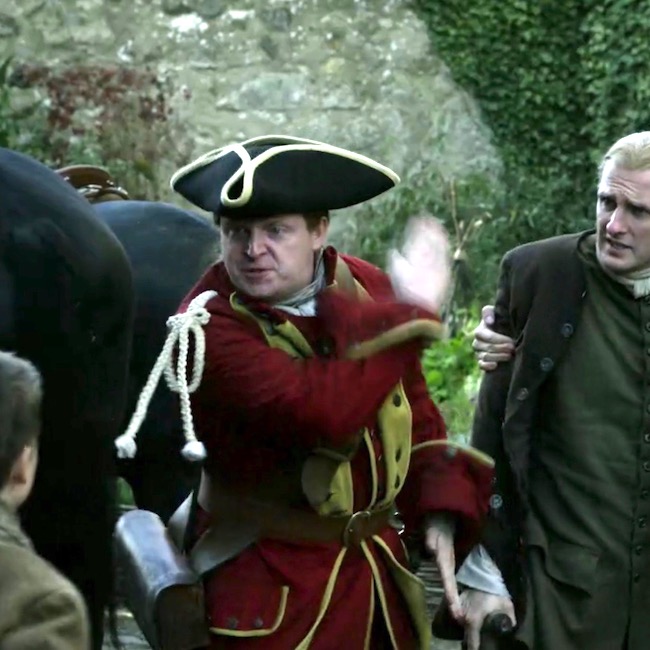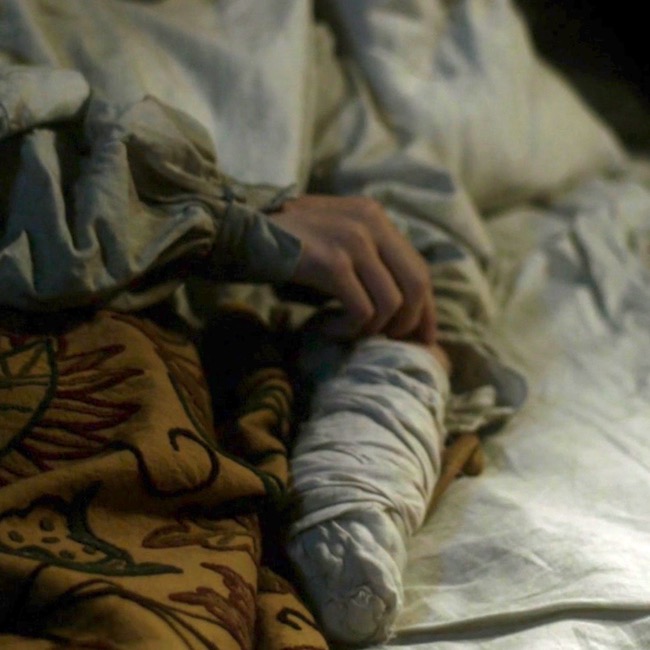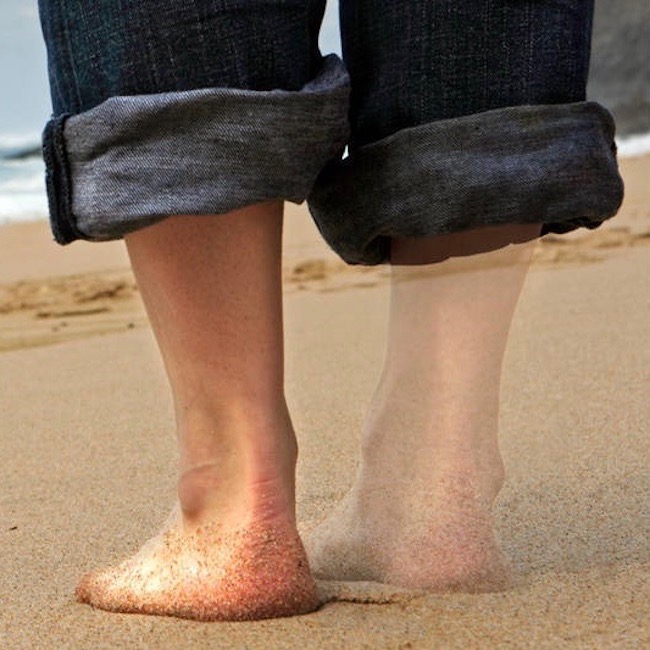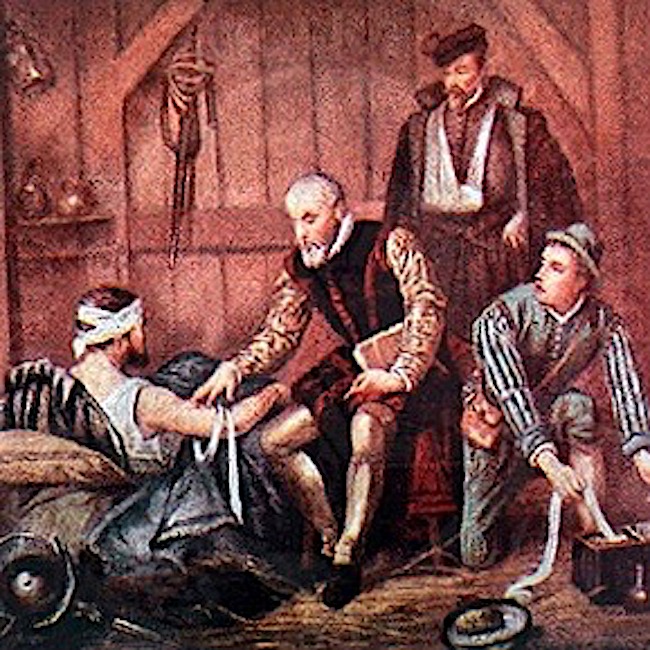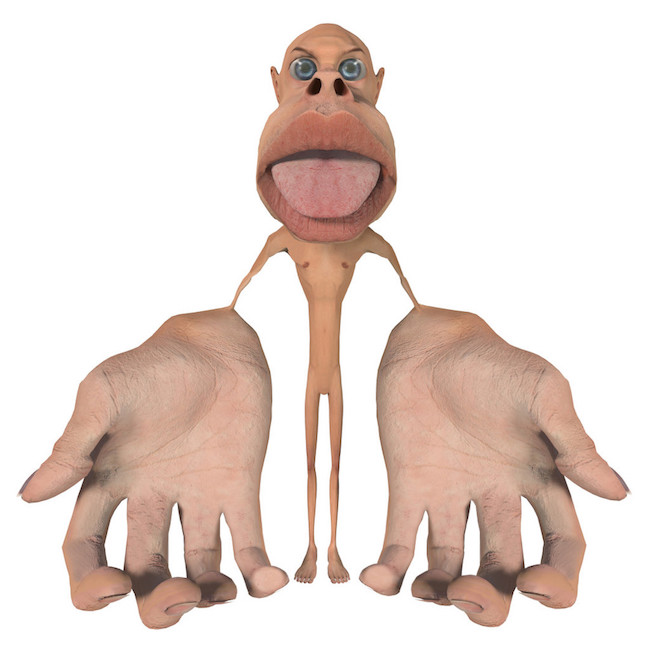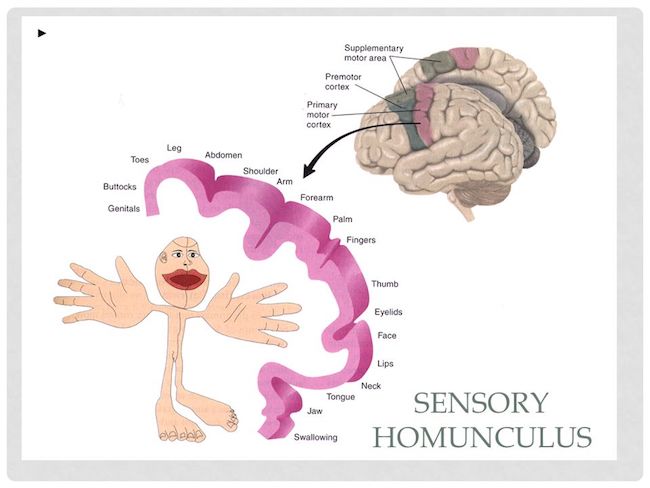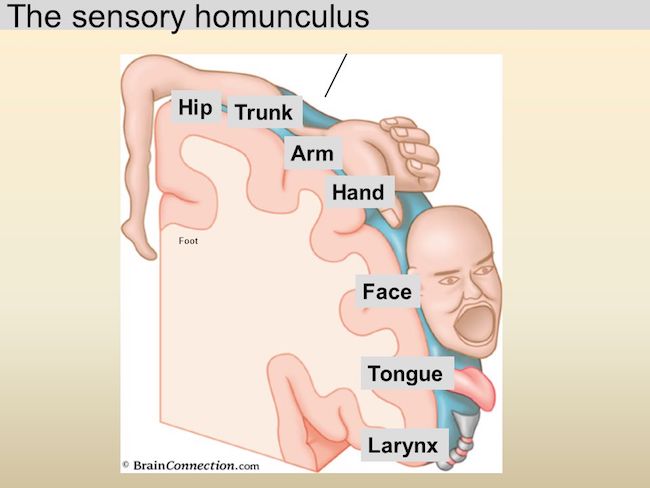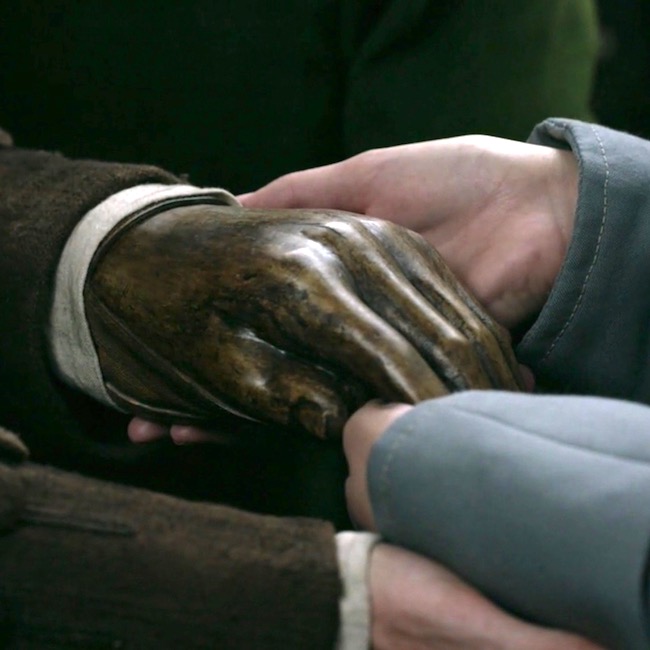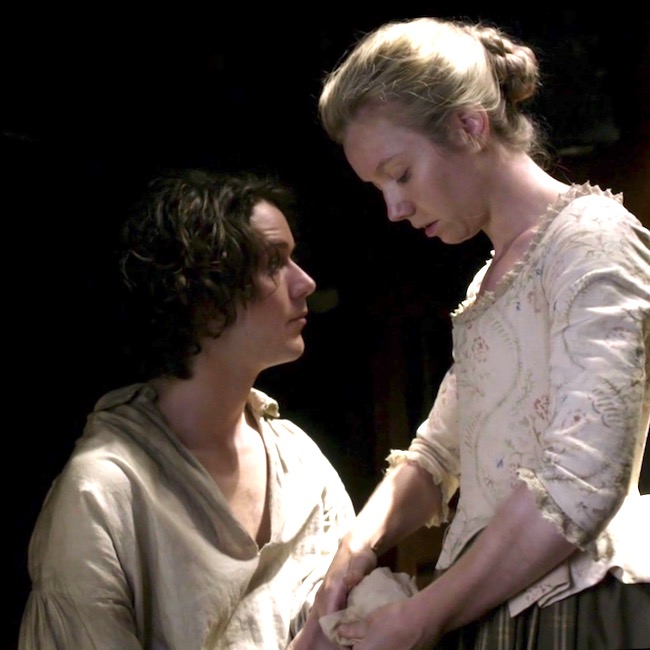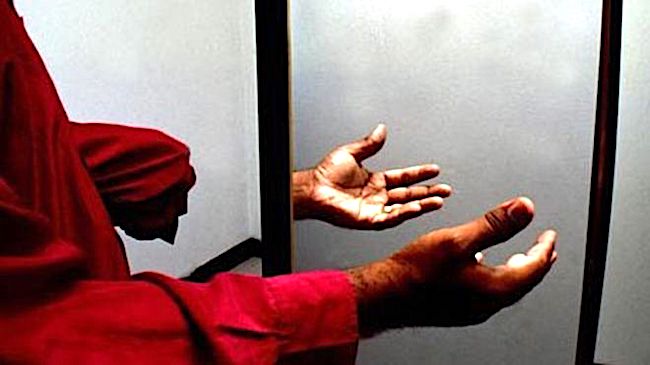“Claire the Knife” is not a usual anatomy lesson. Rather, let’s explore the many images of Claire with a honed edge either in her hands or directed at her person! Such images are taken from S1-S3 of Outlander. There are even more examples in Herself’s books that weren’t translated onto the screen. Please notify me if I miss any fine examples of “Claire the Knife!” Let’s get started!
Early in Outlander episode 101, Sassenach, Claire accidentally encounters Frank’s ancestor, Captain Jonathan Wolverton Randall, Esq. From Outlander book:
“Who the bloody hell are you?” I demanded again.
… He bowed sardonically, hand over his heart. “I am, madam, Jonathan Randall, Esquire, Captain of His Majesty’s Eighth Dragoons. At your service, madam.”
Not an officer-and-a-gentleman, she is soon backed against a stone ridge with his sword pressed to her lovely throat (Anatomy Lesson #12, Claire’s Neck or The Ivory Tower).
Your honor, I submit, Exhibit #1! <g>
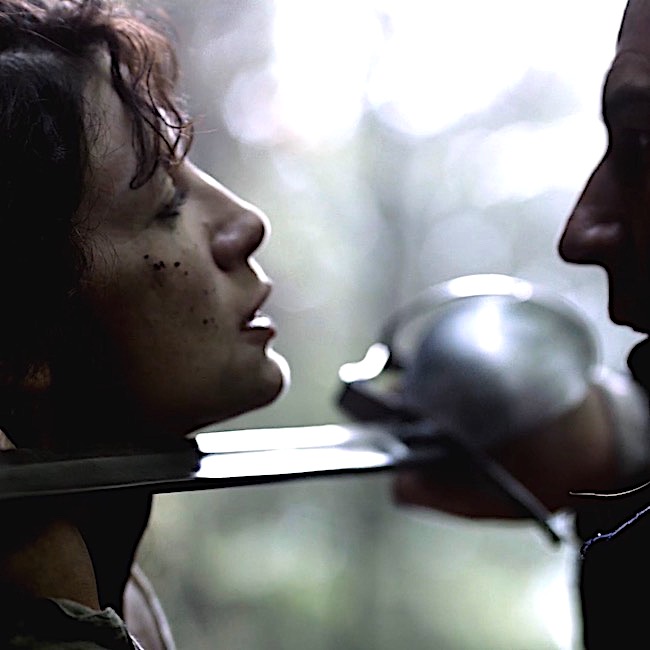
Then, in Outlander episode 104, The Gathering, Claire twice encounters a knife, once in her hand and once shoved into her beautiful face!
Swiftly gliding into Mrs. Fitz’s kitchen, Claire grabs for a butcher knife amid bins of potatoes (Hey, I thought Jenny introduces those to Scotland?), chicken and other delectables. She is gathering provisions for a furtive flight to the stones. Outlander book explains:
During my hours helping in the kitchens and orchards, I had managed to stow away sufficient food to see me provided for several days, I thought… I had stout boots and a warm cloak, courtesy of Colum. I would have a decent horse; on my afternoon visit to the stables, I had marked out the one I meant to take.
Her knife grab is thwarted by Ms. Fitz:
“Claire! You aren’t wearing that to the ceremony, are ye lass?”
No, Mrs. Fitz, she’s not wearing that butcher knife! Hee, hee.
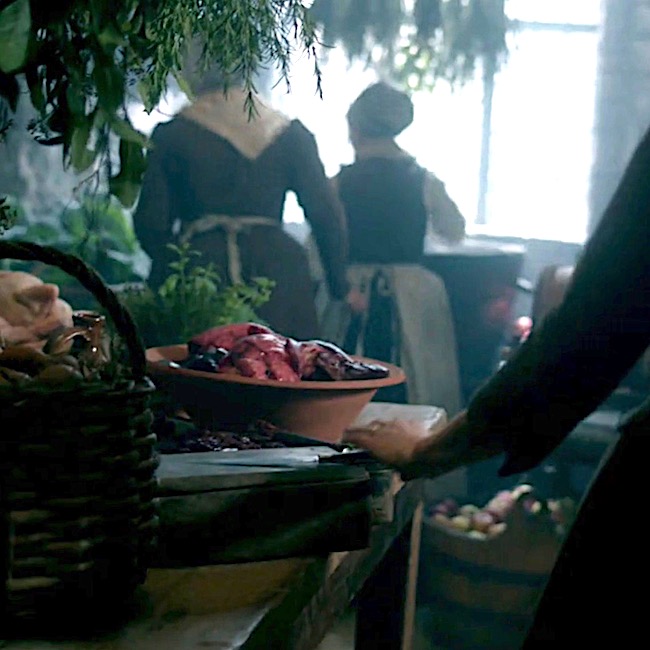
Later in evening as the entire ensemble is either oath-taking or stinking drunk, Claire sidles into the stables to steal away on Brimstone.
Oops! She steps on Jamie cocooned in hay (yay!). Mistaking her as a threat, he threatens her with his dirk! (wink, wink)
“Jesus H. Rosevelt Christ!”
“No, sassenach, just me.”
(We all ken he is divine, just not that kind of divine!)
From Outlander book:
The obstruction rolled over with a startled oath and grasped me hard by the arms. I found myself held against the length of a sizable male body, with someone’s breath tickling my ear.
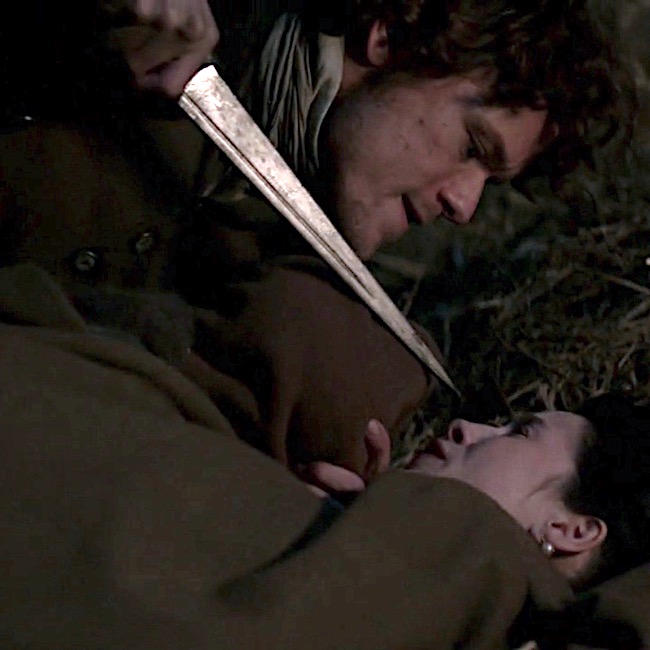
Then, Dougal and his band of merry men head off to collect taxes and conduct other clan “business” in Outlander episode 105, Rent. Dougal explains in Outlander book:
“Through the MacKenzie lands. Colum doesna travel, so visiting the tenants and tacksmen that canna come to the Gathering—that’s left to me. And to take care of the bits of business here and there.”
On the road, Claire witnesses “fowl” play by Dougal and his men. Declaring she will not eat yummy-looking birds she thinks were roasted by thieves, Claire quickly faces the point of Angus’ dirk. Angus is having none of it that kind of name calling, especially from an English sassenach spy! Fortunately, Jamie talks him down and Claire flounces away with left eye intact.
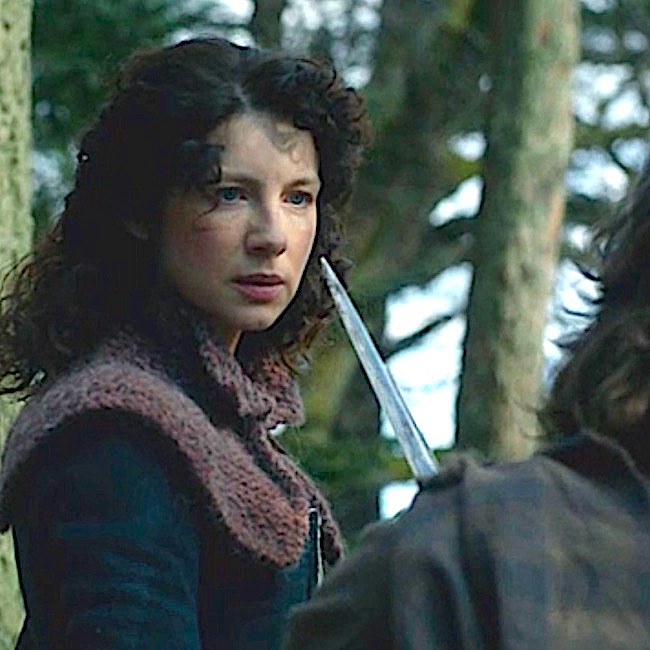
By episode’s end, Claire and Dougal are accosted by Lt. Jeremy Foster.
In Outlander episode 106, The Garrison Commander, both are delivered to the garrison at Brockton. There, she enjoys a sumptuous meal (excepting the claret) with Brigadier General Lord Oliver Thomas, et al, until, horror of horrors, Captain Black Jack arrives. Thereafter, things take a distinctly downward turn!
After aiding the amputation of a soldier’s arm, she returns to the dining room to find puir Corporal Hawkins performing ablutions on BJR! Claire recognizes the stropped blade as a family heirloom – the very one she used to shave first hubby, Frank.
If only, she held that blade to BJR’s neck – could have saved she and Jamie a world of hurt! Another blade – another time. From Outlander book:
“Yes, I thought so. It had to be you, from MacKenzie’s description.” The door closed behind me, and I was alone with Captain Jonathan Randall of His Majesty’s Eighth Dragoons. He was dressed this time in a clean red-and-fawn uniform, with a lace-trimmed stock and a neatly curled and powdered wig.
But the face was the same—Frank’s face. My breath caught in my throat.
This time, though, I noticed the small lines of ruthlessness around his mouth, and the touch of arrogance in the set of his shoulders. Still, he smiled affably enough, and invited me to sit down.
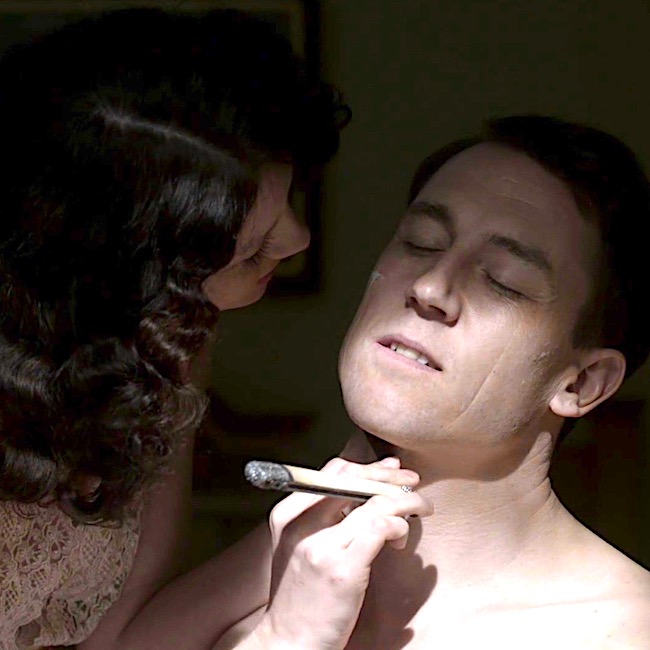
Escaping BJR’s clutches, Dougal stops off at St. Ninian’s spring for a wee nip of sulfurous water. Known in the highlands as a liar’s spring, he waits to see if the magical waters will burn Claire’s gullet (Anatomy Lesson #45, Tremendous Tube – GI System, Part 2)! He draws a dirk to finish her off should massive heartburn set in. From Outlander book:
“No!” Something occurred to me. “So at least you believe me when I say I’m not an English spy?”
“I do now.” He spoke with some emphasis. …
“St. Ninian’s spring.
…They call it the liar’s spring, as well. The water smells o’ the fumes of hell. Anyone who drinks the water and then tells untruth will ha’ the gizzard burnt out of him.”
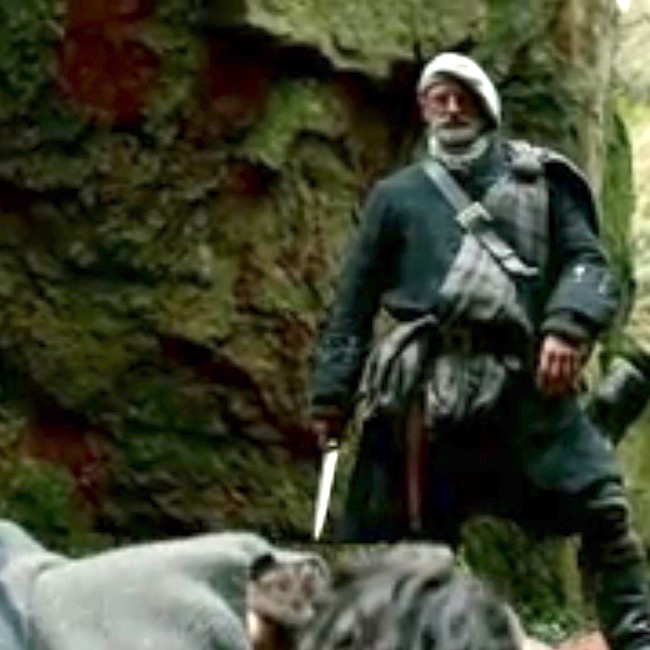
Fast forward one episode, Dougal finally gets his wish as his dirk bites into Claire’s wrist!
Blood vow at a wedding she never sought, but well worth the scar!
Ye are Blood of my Blood, and Bone of my Bone.
I give ye my Body, that we Two might be One.
I give ye my Spirit, ’til our Life shall be Done.
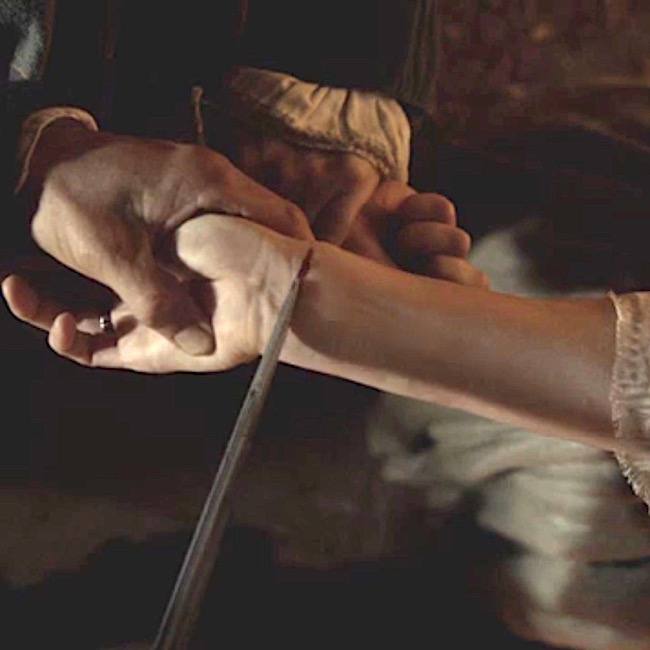
Outlander Episode 108, Both Sides Now: Still on rent-collection duty, the MacKenzie band is raided by Clan Grant! Rent, horses, food, what-have-you, everything is fair game. In the aftermath, Jamie is scolded for giving his wife a dirk for protection but not teaching her how to use one. Time for Claire to get a knife-life lesson. Ned Gowan extracts a small sgian dubh drawn from a more private part of his, ahem, breeks. So, she takes a knife-wielding lesson from TV Angus/book Rupert. Willie is the sacrificial lamb:
He poked a blunt forefinger under the lower rib on the right, … “This is the spot in back—either side. See, wi’ all the ribs and such, ’tis verra difficult to hit anythin’ vital when ye stab in the back. If ye can slip the knife between the ribs, that’s one thing, but that’s harder to do than ye might think. But here, under the last rib, ye stab upward into the kidney. Get him straight up, and hell drop like a stone.”
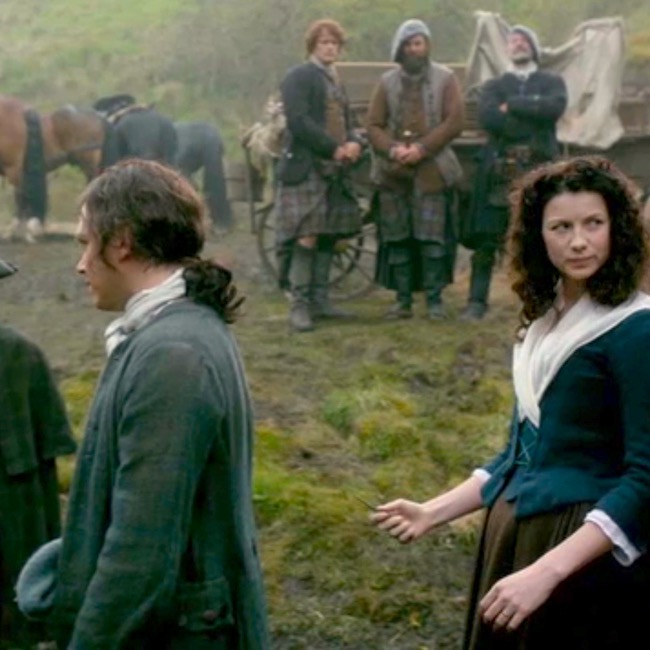
Fab advice as hours later, Jamie and Claire slip into the heather for a quick tryst, soon to be disturbed by two Redcoat deserters (coitus interruptus – snort!). Thwarting her assaulter, Claire thrusts the sgian dubh – into the spot – as she was taught. The lass learned her lesson well!
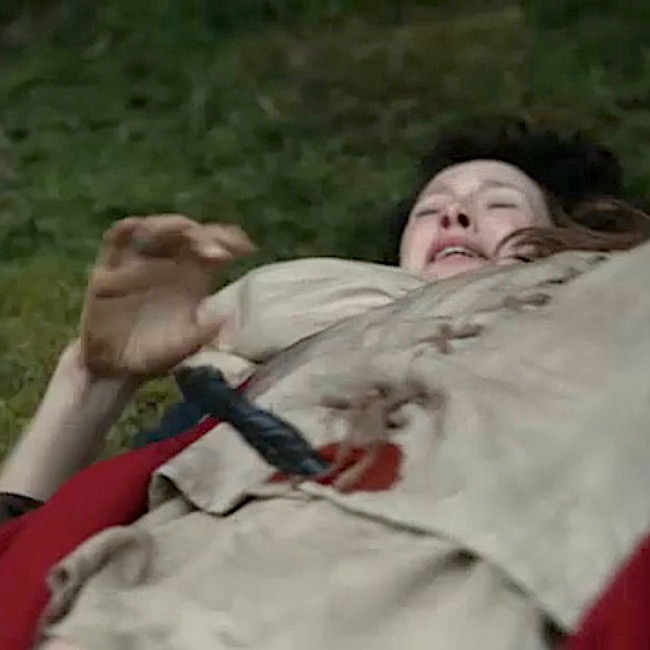
Then, comes Outlander episode 109, The Reckoning: Captured by the Redcoats, assaulted (again) by BJR, rescued and then skelped by her second husband, they seek their way back to each other. As an act of penance, Jamie swears fealty to Claire, this time the dirk is pressed against his bosom (Outlander book):
I swear on the cross of my Lord Jesus, and by the holy iron which I hold, that I give ye my fealty and pledge ye my loyalty. If ever my hand is raised against you in rebellion or in anger, then I ask that this holy iron may pierce my heart.
And, they are off to the races! Oops – not so fast, my lad. In the midst of “reconciliation,” Claire threatens Jamie’s chin with his dirk (Anatomy Lesson #26, Jamie’s Chin – Manly Mentus).
“If,” I said through my teeth, “you ever raise a hand to me again, James Fraser, I’ll cut out your heart and fry it for breakfast!”
Och! Parritch sounds much, much bettah!
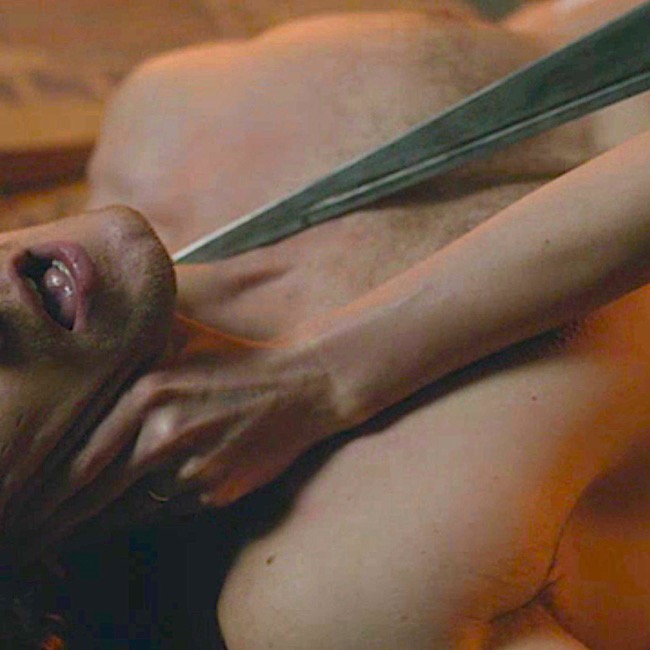
Then, things quiet down for a bit and we see little of “Claire the Knife.” That is, until BJR gets his hands on Jamie. He has coveted the lad since the first flogging. After Murtagh scraps what is left of Jamie off the dungeon stones, they flee Wentworth, returning Jamie to his lawful wife. There she mends his mangled hand, courtesy of BJR and giant Marley.
Blades again, this time in the form of scissors, clip sutures used to mend his broken skin (Outlander ep 116, To Ransom a Man’s Soul).
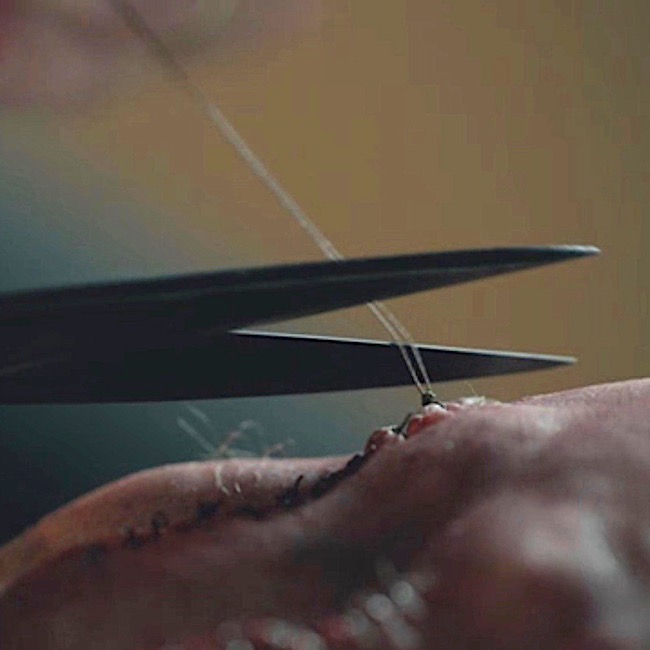
Up pops Season 2. Claire, being pregnant with Faith, isn’t into knife heroics. An exception is her work at the Paris charity hospital, L’Hôpital des Anges. There, the scalpel blade slips nicely into her hands. Consider a workman’s festered wound due to an embedded splinter. She opens the wound and removes the offending object (Outlander episode 203, Useful Occupations and Deceptions). That knife has a life of its own!
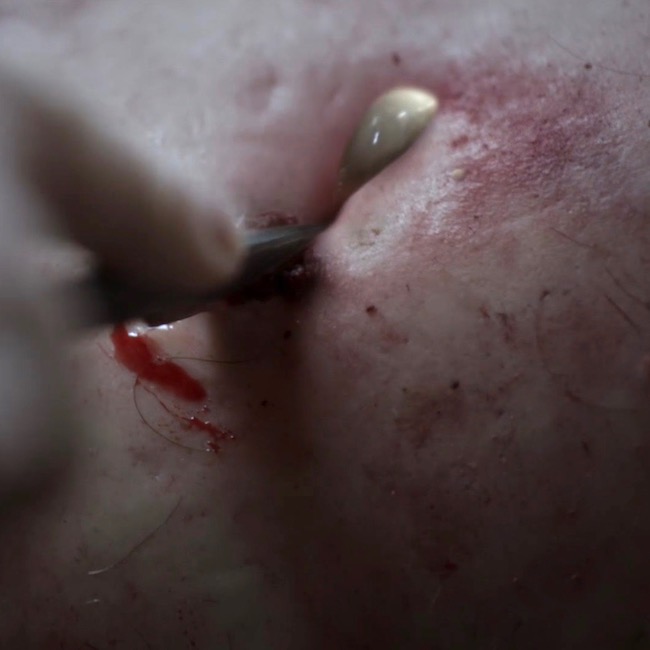
Fast forward to Outlander episode 213, Dragonfly in Amber, wherein Jamie and Claire find themselves mired in a desperate struggle with Dougal – sly Uncle is intent on killing the sassenach witch!
He should have known that Jamie would protect her with name, clan and body! But, neither reason, threat, nor cajoling stops Dougal’s advance. A blade to the chest is the only remedy – in which Claire takes an equal hand – she finishes what Jamie cannot do alone!
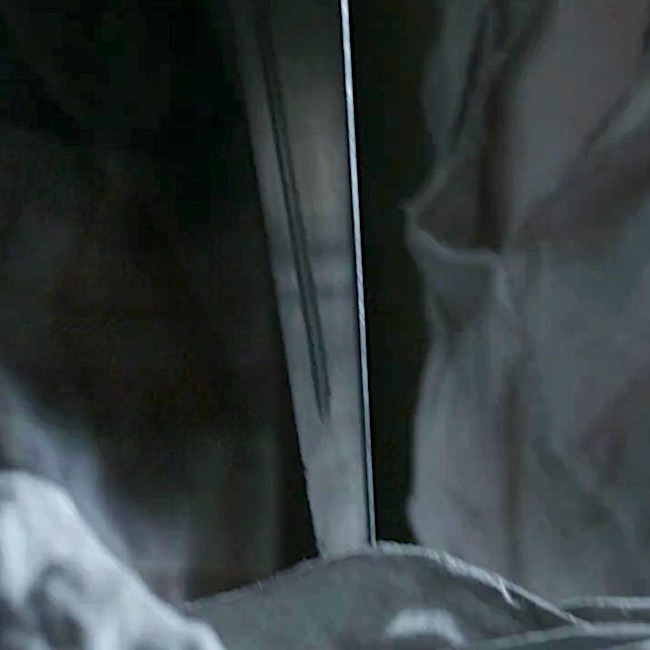
Then, comes season 3. The next time a knife creeps into Claire’s hand, it is at the teaching theater awaiting her first anatomy class as a medical student (yay!). Arriving early, she feels the heft of the professor’s scalpel and is pleased with the heft; it fits well in her surgeon-to-be hand (Outlander episode 302, Surrender).
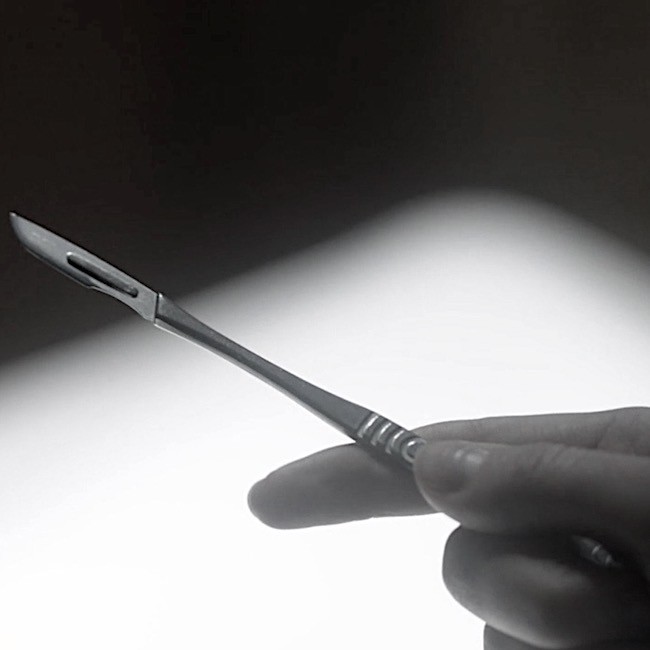
Following the swiftest medical education ever, Claire is soon a practicing surgeon, clipping “necrotic” tissue from a patient’s abdomen (Outlander ep 305, Whisky and Freedom). Time and training has given Claire the license to legally cut another human. Such is her special calling and she fulfills it with grace and skill. Snip, snip. (Pssst… necrotic tissue isn’t pinkish-red in color, but don’t tell anyone.)
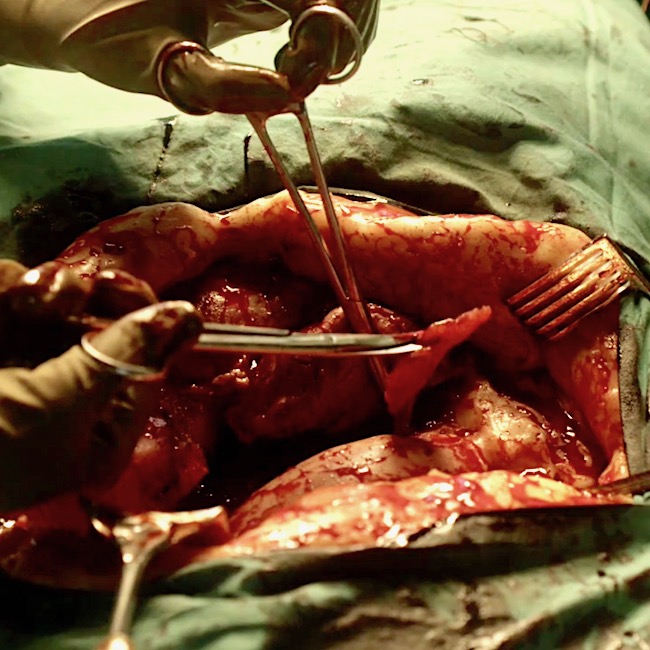
Next thing we know, Claire has donned a bat suit and gone back through the stones to seek A. Malcolm of Edinburgh (Outlander ep 307, Creme de Menthe). Confronting an exciseman in nothing but her shift and a hidden knife, Claire stabs his leg. Have knife – will travel!! He falls, striking his head on the hearth.
Jamie arrives and what to his wondering eyes should appear, but a dying man – oh such is his fear!
Sassenach, what the devil happened????
I step away to do a little smuggling and return to find my wife with her knife and a dying man!!!
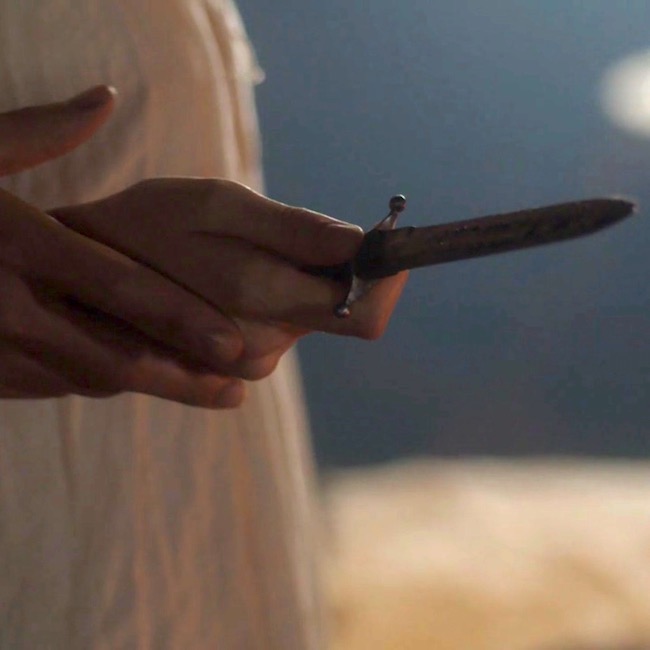
Still counting? Trying to save the life of the SOB (she’s a doctor!), Claire sends for a trephine from the local barber surgeon. She opens her medical kit, retrieving her trusty-not-rusty scalpel. Yes!
She makes a swift cut through the scalp – a space is opened through which the trepanning instrument is inserted. Then, she starts drilling for oil. Not really, she drills to relieve pressure from an epidural bleed.
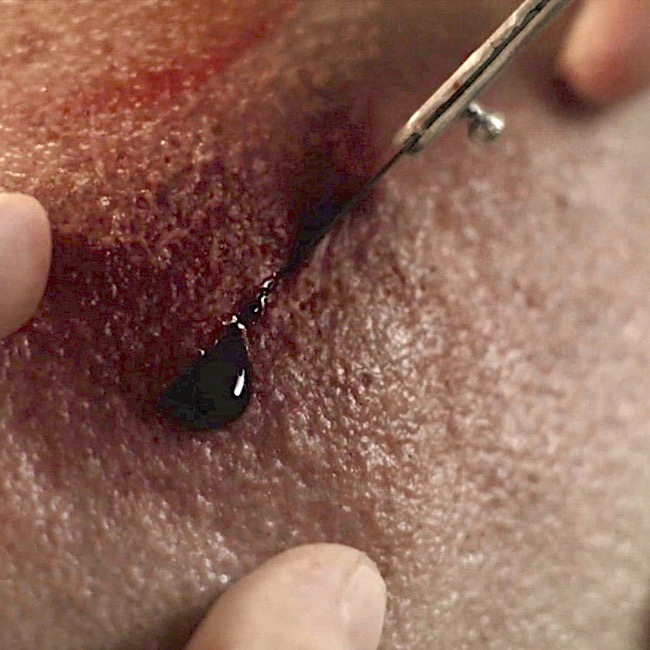
Hang on, Snoopy, hang on – we’re almost finished! Then, in episode 308, First Wife, Claire uses her magic scalpel to open a nick near Jamie’s left oxter (Anatomy Lesson #4, Jamie’s Chest” or “the 8th Wonder of the World!). Her goal is to retrieve bits of lead discharged from Laoghaire’s fowling piece. She grasps and retrieve the bits leaving Jamie’s axillary/brachial artery intact (Anatomy Lesson #56: Achy Brachial Artery)! She is super good with a knife!
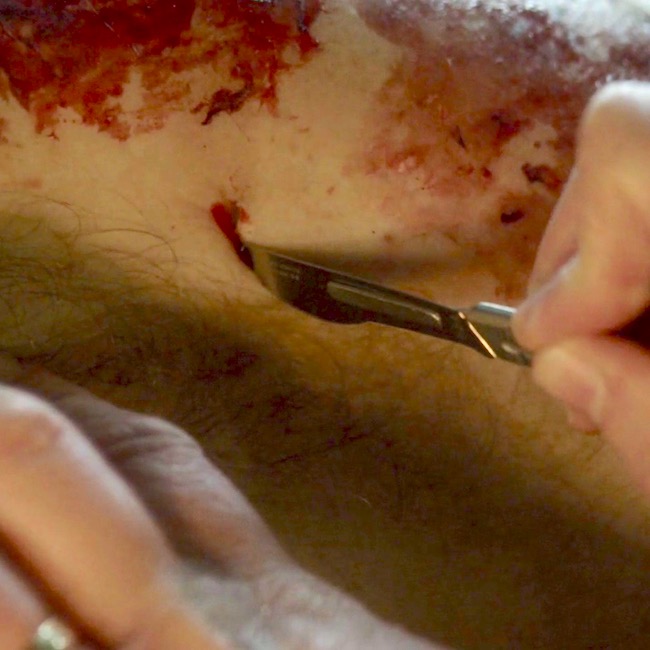
The last time we see Claire wield a blade in TV Outlander, she confronts the Bakra (Outlander episode 313, Eye of the Storm)! Picking up a machete (ax in Voyager book), she screams and advances on Geillis Abernathy! She must prevent the witch from her fulfilling her plan to kill young Ian and pass through the time portal to slay Bree.
Whack! Claire’s blade finds its mark and the wicked witch lies deid! Graphically explained in Voyager book:
Reflections of the fire burned red in the pupils of her eyes. The red thing, Jamie had called it. I gave myself to it, he had said.
I didn’t need to give myself; it had taken me.
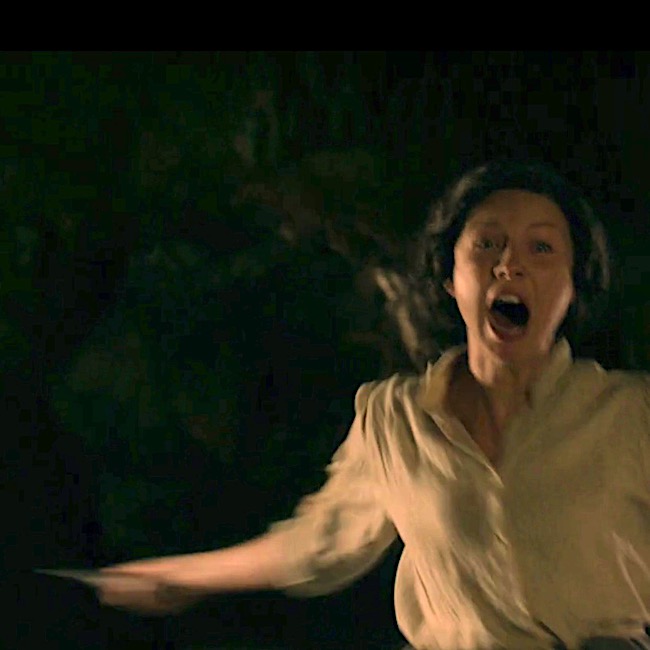
After fleeing Abandawe cave with Ian and Jamie, Claire trembles in the jungle with gore dropping from the machete.
It is then she realizes, the 200+ y.o. bones she examined in Boston with Dr. Joe Abernathy (Outlander ep 305, Whisky and Freedom) belonged to none other than Geillis Abernathy! And, Claire herself, ushered in that well-earned fate! Like I said, Claire the Knife!
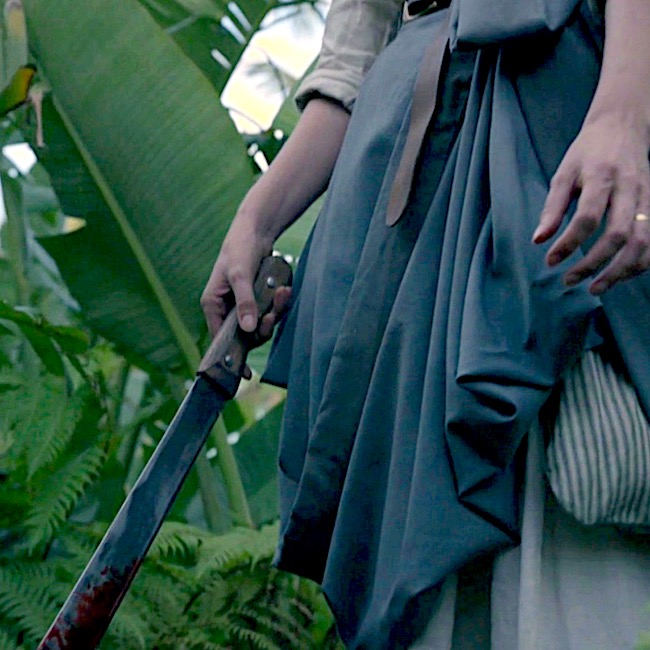
To summarize, over many episodes, Claire is at one end or the other of a blade; always has been – always will be. <G>
Bobby Darren sang the hit, “Mack the Knife.” I re-imagine it as, “Claire the Knife:”
Oh, the shark, babe, has such teeth, dear
And it shows them pearly white
Just a jackknife is Miss Claire, babe
And she keeps it, ah, out of sight.
Dinna mess with the Sassenach Surgeon!
The deeply grateful,
Outlander Anatomist
Follow me on:
- Twitter @OutLandAnatomy
- Join my Facebook Group: OutlandishAnatomyLessons
- Instagram: @outlanderanatomy
- Tumblr: @outlanderanatomy
- Youtube: Outlander Anatomy
Photo Creds: Starz, Outlander episodes 101, 104, 105, 106, 107, 108, 109, 116, 203, 213, 302, 305, 307, 308, 313

